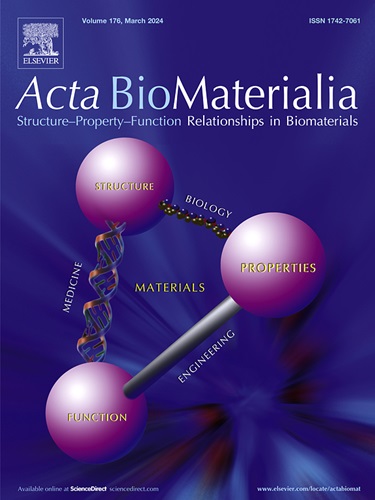Mitochondria-loading erythrocytes transfer mitochondria to ameliorate inflammatory bone loss
IF 9.4
1区 医学
Q1 ENGINEERING, BIOMEDICAL
引用次数: 0
Abstract
Inflammatory diseases frequently result in bone loss, a condition for which effective therapeutic interventions are lacking. Mitochondrial transfer and transplantation hold promise in tissue repair and disease treatments. However, the application of mitochondrial transfer in alleviating disorders has been limited due to its uncontrollable nature. Moreover, the key challenge in this field is maintaining the quality of isolated mitochondria (Mito), as dysfunctional Mito can exacerbate disease progression. Therefore, we employ Mito-loading erythrocytes (named MiLE) to achieve maintenance of mitochondrial quality. In addition, MiLE can be cryopreserved, allowing for long-term preservation of mitochondrial quality and facilitating the future application of mitochondrial transfer. In the inflammatory microenvironment, MiLE supplies Mito as well as O2 to macrophages. By undergoing metabolic reprogramming, MiLE suppresses lipopolysaccharide-induced osteoclast differentiation and promotes macrophage polarization from M1 to M2 phenotype, ultimately ameliorating inflammatory bone destruction. In summary, this work tackles the challenges of uncontrollable mitochondrial transfer and mitochondrial quality maintenance, and offers an opportunity for future exploration of organelle transplantation.
Statement of significance
The application of mitochondrial transfer for the alleviation of pathologies has been hindered by the intrinsic limitations in terms of control and selectivity. Furthermore, maintaining mitochondrial integrity and functionality following isolation poses a significant challenge. In a pioneering approach, we develop a method for encapsulating mitochondria within erythrocytes, termed mitochondria-loading erythrocytes (MiLE), which ensures extended mitochondrial functionality and controlled transfer. Within an inflammatory microenvironment, MiLE supplies both mitochondria and O2 to macrophages. By undergoing metabolic reprogramming, MiLE alleviates lipopolysaccharide-induced osteoclast differentiation and promotes macrophage polarization from M1 to M2 phenotype, ultimately ameliorating inflammatory bone destruction.

求助全文
约1分钟内获得全文
求助全文
来源期刊

Acta Biomaterialia
工程技术-材料科学:生物材料
CiteScore
16.80
自引率
3.10%
发文量
776
审稿时长
30 days
期刊介绍:
Acta Biomaterialia is a monthly peer-reviewed scientific journal published by Elsevier. The journal was established in January 2005. The editor-in-chief is W.R. Wagner (University of Pittsburgh). The journal covers research in biomaterials science, including the interrelationship of biomaterial structure and function from macroscale to nanoscale. Topical coverage includes biomedical and biocompatible materials.
 求助内容:
求助内容: 应助结果提醒方式:
应助结果提醒方式:


